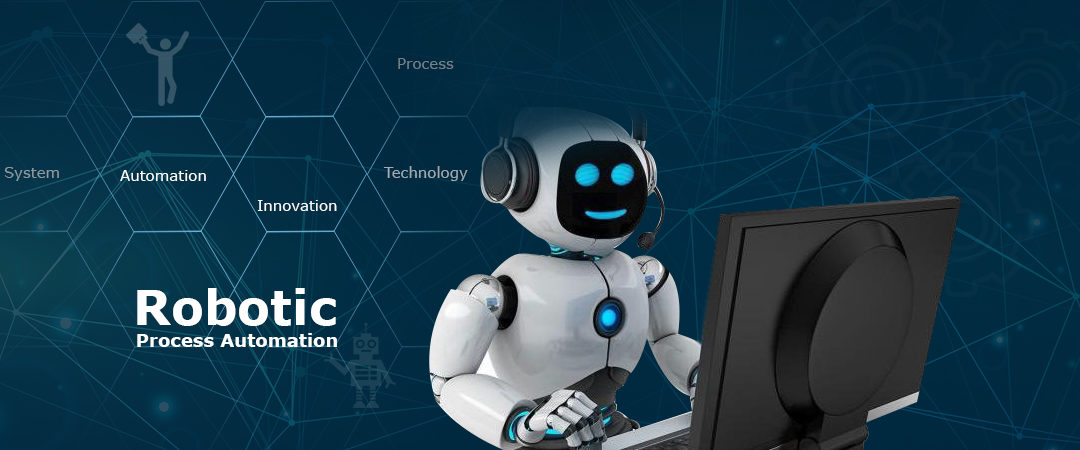Webinar on Introduction to Remote Process Automation and Artificial Intelligence

About Course
Robotic process automation
Robotic process automation (or RPA) is a form of business process automation technology based on metaphorical software robots (bots) or on artificial intelligence (AI)/digital workers. It is sometimes referred to as software robotics (not to be confused with robot software).
In traditional workflow automation tools, a software developer produces a list of actions to automate a task and interface to the back-end system using internal application programming interfaces (APIs) or dedicated scripting language. In contrast, RPA systems develop the action list by watching the user perform that task in the application’s graphical user interface (GUI), and then perform the automation by repeating those tasks directly in the GUI. This can lower the barrier to use of automation in products that might not otherwise feature APIs for this purpose.
RPA tools have strong technical similarities to graphical user interface testing tools. These tools also automate interactions with the GUI, and often do so by repeating a set of demonstration actions performed by a user. RPA tools differ from such systems in that they allow data to be handled in and between multiple applications, for instance, receiving email containing an invoice, extracting the data, and then typing that into a bookkeeping system.
Features that improve business processes
Traditional RPA bots are known for handling only one specific task at a given time. When it comes to addressing large volumes, we need to clone these bots and run them simultaneously. RPA providers generally charge users for each simultaneous process. This can become a costly issue for businesses, especially during volume increases. Therefore, additional costs are a key factor to consider when choosing an RPA solution for our business.
This software works as a virtual assistant and can handle complex processes from complicated calculations, data capture to record keeping.
The following are crucial features that improve business processes:
- Non-alterable nature: A company can easily implement RPA in its workflows without having to interrupt or change the existing structure or risks, although there is room for improvement.
- Data Analysis: The collection of critical data from multiple sources, the analysis, and storage of data and the creation of reports have brought digital transformation to companies with RPA. This enables accurate forecasting of sales data along with other key performance indicators (KPIs).
- Prioritization of internal work queues: Each RPA software consists of internal work queues. These work queues are used to extract data derived from various transactions for analysis. The extracted data is stored on a cloud server and made available to the robots for access.
Types of robotic process automation tools
RPA improves performance in different ways. The following are the types of RPAs we can adopt in our business:
- Assisted or robotic desktop automation tools This type of automation always starts with the user through the user’s desktop. The user first launches the RPA code to perform the necessary operations rather than waiting for the staff to do so.
- Unattended automation tools This type of automation completes business processes in the background and is mainly used for back-end tasks.
- Hybrid automation tools This type of automation combines assisted and unattended automation tools to perform operations from start to finish.
How to choose the right RPA for our business
A clear set of objectives is the primary goal before opting for a specific RPA tool for our business. The following are the key factors to consider before selecting an RPA tool for our business:
- Easy-to-use interface : The simple user experience is an important criterion for choosing the right CLOTHING tool for our business processes. A simple user interface will ensure that all employees work efficiently.
- Cost : The replacement of tedious tasks performed by human labor is largely replaced by bots. This automation process saves costs. Employees can concentrate on their core tasks and devote time and effort to their skills instead of performing redundant and tedious tasks with the help of RPA tools. Purchasing an RPA software tool involves associated costs, such as the cost of individual licenses, the cost of software and other overheads.
- Scalability : The implementation of an effective RPA tool improves business processes and leads to company growth. This growth is accompanied by the hiring of more resources. Therefore, an RPA tool can improve the scalability of a business in the long term.
- Security : Data analysis, compliance, and financial transactions require a highly secure environment. A large RPA software tool ensures a secure solution for all business processes and upgrades as well.
- Extended Support : Different vendors offer different types of support. A dedicated support team is needed to ensure robust maintenance and support.
Source : Wikipedia, www.rootstack.com, Symprio
Course Content
Webinar on Introduction to Remote Process Automation and Artificial Intelligence
-
Webinar on Introduction to Robotic Process Automation and Artificial Intelligence
01:23:24
